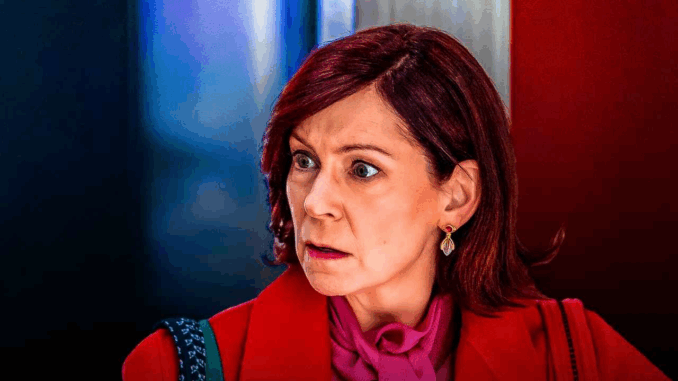
In a series known for its quirky charm and unconventional cases, the Season 2 finale of Elsbeth took a daring leap, placing our beloved attorney-detective, Elsbeth Tascioni, in the most unexpected setting yet: prison. Titled “Ramen Holiday,” this episode not only challenged Elsbeth’s resilience but also redefined the show’s narrative boundaries.
A Recap of the Road to Incarceration
The Downfall: Elsbeth’s Conviction
After a relentless pursuit of justice against the corrupt Judge Milton Crawford, Elsbeth finds herself ensnared in a web of deceit. Judge Edwin Dousant, a Crawford loyalist, manipulates the system, leading to Elsbeth’s wrongful conviction and subsequent imprisonment.
Behind Bars: A Reunion with the Past
Inside the Midtown Detention Center, Elsbeth confronts a haunting reality: she’s surrounded by individuals she once helped incarcerate. Notable among them are Joe Dillon, Pupetta Del Ponte, and Dr. Vanessa Holmes. The atmosphere is tense, with a theatrical production depicting Elsbeth as a corrupt figure adding fuel to the fire.

The Murder Mystery Within the Walls
The Crime: A Director’s Demise
The prison’s drama instructor, Alex Modarian, is found dead, stabbed near a bowl of ramen. Given the circumstances, suspicion falls on the inmates, especially those with grudges against Elsbeth.
The Investigation: Elsbeth’s Redemption
True to her nature, Elsbeth embarks on an investigation, navigating the complex dynamics of prison life. Her determination to uncover the truth becomes a quest for personal redemption and a reaffirmation of her commitment to justice.
A Musical Interlude: The ‘Suspect Tango’
In a surprising twist, the episode features a musical number inspired by “Cell Block Tango” from Chicago. Dubbed the “Suspect Tango,” this performance by the inmates serves as both entertainment and a narrative device, reflecting the characters’ inner turmoil and the overarching themes of justice and retribution.
Kaya’s Departure: A Bittersweet Goodbye
Detective Kaya Blanke, portrayed by Carra Patterson, bids farewell as she moves to Washington D.C. for special task force training. Her departure marks the end of an era, leaving a void in Elsbeth’s life and the series’ dynamic.
Themes Explored: Justice, Redemption, and Resilience
The finale delves deep into the imperfections of the justice system, highlighting Elsbeth’s unwavering belief in fairness despite personal setbacks. Her interactions with former convicts reveal the complexities of guilt, transformation, and the human capacity for change.
Setting the Stage for Season 3
With Elsbeth’s release and a renewed sense of purpose, the stage is set for a compelling third season. Showrunner Jonathan Tolins hints at a return to high-society cases, promising a blend of familiar faces and fresh challenges.
Conclusion: A Finale That Redefines the Series
“Ramen Holiday” stands as a testament to Elsbeth’s ability to evolve while staying true to its core. By placing its protagonist in uncharted territory, the series reinvigorates its narrative, offering viewers a blend of drama, introspection, and the signature wit that defines Elsbeth Tascioni.
FAQs
Q1: Who was responsible for Alex Modarian’s death?
A1: The murder was orchestrated by “Mama Martin,” a new character introduced in the finale, adding a fresh layer to the prison’s complex dynamics.
Q2: Will Kaya Blanke return in future episodes?
A2: While Kaya has departed for training in D.C., Carra Patterson is expected to make guest appearances in upcoming episodes.
Q3: What was the significance of the ‘Suspect Tango’?
A3: The musical number served as a narrative tool, reflecting the inmates’ perspectives and adding a theatrical flair to the episode.
Q4: How does Elsbeth’s prison experience impact her character?
A4: The incarceration challenges Elsbeth’s ideals, but ultimately reinforces her commitment to justice and personal growth.
Q5: What can viewers expect in Season 3?
A5: Season 3 promises a return to high-profile cases, with Elsbeth navigating new challenges and reuniting with familiar characters.
